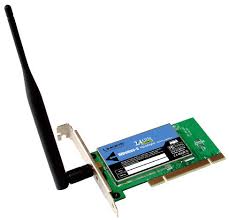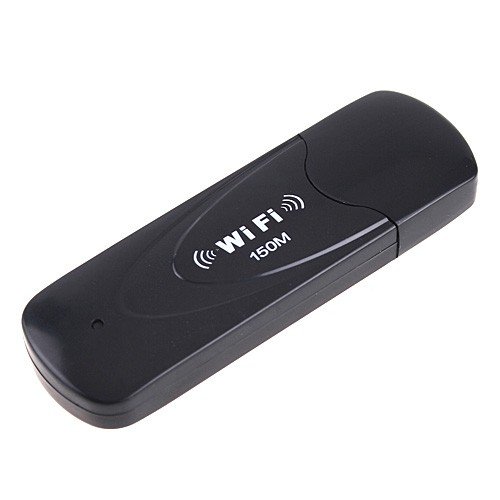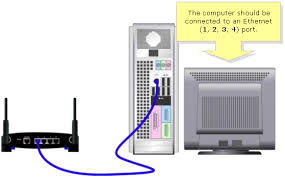TRANSMISSION MEDIA.
-Transmission media is the means through which data is transformed from one place to another is called transmission or communication media. There are two categories of transmission media used in computer communications.
TYPE OF TRANSMISSION MEDIA
Unguided media
Guided media
-contain some conducting material to carry data or signal.Many types of cables and wires fall under this category.Each of them has its own characteristics like transmission speed,effects of noise.Guided media is also known as wired media.In this we will use wires to send our data from one place to other place.
Type of guided media
Twisted-Pair cable
-one of the more widely used transmission media for network cabling and telephones systems is twisted-pair cable.This cable consists of one or more twisted-pair wires bundled together.Each twisted-pair wire consists of two separate insulated copper wires that are twisted together.The wires are twisted together to reduce noise.Noise is an electrical disturbance that can degrade communications.
Coaxial cable
-referred to as coax (pronounced KO-ax),consist of single copper wired surrounded by at least three layers:
- ans insulating materials
- a woven or braided metal
- plastic outer coating
Cable television (CATV) network wiring often uses coaxial cable because it can be cabled over longer distances than twisted-pair cable.Most of today's computer networks , however,do not use coaxial cable because other transmission media such as fiber-optic cable transmit signals at faster rates.
Fiber-optic cable
The core of a fiber-optic cable consist of dozens or hundreds of thin strands of glass or plastic that use light to transmit signals.Each strand,called an optical fiber ,is thin as a human hair.Inside the fiber-optic cable,an insulating glass cladding and a protective coating surround each optical fiber.
Fiber optic cables have the following advantages over cables that use wire,such as twisted wired and coaxial cables:
- Capability of carrying significantly more signal than wire cables.
- Faster data transmission
- Less susceptible to noise(interference) from other devices such as a copy machine
- Better security for signals during transmission
- Smaller size (much thinner and lighter weight)
Disadvantages of fiber-optic cable are it cost more than twisted-pair or coaxial cable and can be difficult to install and modify.Despite these limitations,many local and long -distance telephone companies are replacing existing telephone lines with fiber-optic cables,enabling them to offer fiber Internet access to home and business users.Business also are using fiber -optic cables in high-traffic network or backbone in a network.
Unguided media
-it does not contain in some physical conductor or metal.Rather,its transport electromagnetic signal through air.It is also known as wireless media because in this we are not using any cable.
Type of wireless media or unguided media transmission used in communication include infrared,broadcast radio,cellular radio,microwave and communications satellites.
Infrared
Infrared (IR) is a wireless transmission medium that sends signals using infrared light waves.Mobile computers and devices ,such as mouse,printer and smart phone, often have an IrDA port that enable transfer of data form one device to another using infrared light waves.If your notebook computerhas an IrDA port ,simply position the port in front of the IrDA port on printer to print a document wirelessly.Many PDAs also have IrDA ports that allow user to transfer data to another PDAs network wirelessly.
Communication devices are the machines that assist in transmission of data. The versatility of a computer gets enhanced considerably when it can communicate with other devices and computers. For a two-way communication, a computer must be equipped with a modulator for outgoing data and a demodulator for the incoming data. This modulating device is referred to as a modem. There are various kinds of communication devices in the present day market.
Network Interface Card (NIC) or Network Connector.


Type of wireless media or unguided media transmission used in communication include infrared,broadcast radio,cellular radio,microwave and communications satellites.
Infrared
Infrared (IR) is a wireless transmission medium that sends signals using infrared light waves.Mobile computers and devices ,such as mouse,printer and smart phone, often have an IrDA port that enable transfer of data form one device to another using infrared light waves.If your notebook computerhas an IrDA port ,simply position the port in front of the IrDA port on printer to print a document wirelessly.Many PDAs also have IrDA ports that allow user to transfer data to another PDAs network wirelessly.
Broadcast Radio
Broadcast radio is a wireless transmission medium that distribiutes radio signals through the air over long distances such as between cities,regions, and countries and short distances such as within an office or home.
For radio transmission,you need a transmitter to send the broadcast radio signal and receiver to accept it.to receive the broadcast radio signal,the receiver has an antenna that located in the range of the signal.Some network use the transceiver,which both send and receives the signal from wireless device.Broadcast radio is slower and more susceptible to noise than physical transmission mwdia nut it provides flexinility and portability.
Cellular Radio
Cellular radio makes better use of the limited frequency spectrum available for mobile radio by re-using the same frequencies many times over . Frequency re-use is achieved by dividing a large geographical area into a number of small, nominally hexagonal areas, known as cells, over the whole country. The transmitted power level of each base station is limited to
restrict the coverage area of that base station. Frequencies are assigned in such a way that the same frequency can be used for different voice transmissions only a few cells away.
Cellular radio uses multitudinous access points sited according to local traffic demands. The physical size of a cell is limited by radio wave propagation characteristics. At VHF and UHF , propagation is 'line-of-sight' and the coverage area is influenced by buildings and the
local terrain. In a town or city it is necessary to place some base station aerials at the top
of tall buildings and to position others lower down, on the top of lamp posts for example.
This means that in the center of a town, the size of a cell may be as small as 1 km in diameter
and in such cases a cell is then known as a microcell. Within a high office block it is often
necessary to use even smaller picocells.A mixed-cell cellular radio system.:
Several catagories of cellular transmission exist,defining the development of cellular networks;
- 1G (first generation) transmitted analog data
- 2G (second generation) transmit digital data at speed from 9.6 Kbps to 19.2 Kbps
- 3G (third generation) transmit digital data at speed 144 Kbps to 2.4 Mbps
- 4G (fourth generation) transmit digital data at speed up to 15 Mbps
Microwaves
Microwaves are radio wave (a form of electromagnet radiation) with wavelength ranging from as long as one meter to as short as one millimeter, or equivalently, with frequencies between 300 MHz (0.3 GHz) and 300 GHz. This broad definition includes both UHF and EHF (milimeter waves), and various sources use different boundaries. In all cases, microwave includes the entire SHF band (3 to 30 GHz, or 10 to 1 cm) at minimum, with RF engineering often putting the lower boundary at 1 GHz (30 cm), and the upper around 100 GHz (3 mm).
The prefix "micro-" in "microwave" is not meant to suggest a wavelength in the micrometer range. It indicates that microwaves are "small" compared to waves used in typical radio broadcasting, in that they have shorter wavelengths. The boundaries between far infrared light, terahertz radiation, microwaves, and ultra high frequency radio wave are fairly arbitrary and are used variously between different fields of study.
Microwave technology is extensively used for point-to-point telecomunication (i.e., non broadcast uses). Microwaves are especially suitable for this use since they are more easily focused into narrow beams than radio waves, their comparatively higher frequencies allow broad bandwidth and high data flow, and also allowing smaller antenna size because antenna size is inversely proportional to transmitted frequency (the higher the frequency, the smaller the antenna size). Microwaves are the principal means by which data, TV, and telephone communications are transmitted between ground stations and to and from satellites. Microwaves are also employed in microwave ovens and in radar technology.
At about 20 GHz, decreasing microwave transmission through air is seen, due at lower frequencies from absorption from water and at higher frequencies from oxygen. A spectral band structure causes fluctuations in this behavior (see graph at right). Above 300 GHz, the absorption of microwave electromagnetic radiation by Earth's atmosphere is so great that it is in effect opaque, until the atmosphere becomes transparent again in the so-called infrared and optical window frequency ranges.
The term microwave also has a more technical meaning in electromagnetics and circuit theory. Apparatus and techniques may be described qualitatively as "microwave" when the frequencies used are high enough that wavelengths of signals are roughly the same as the dimensions of the equipment, so that lumped-element circuit theory is inaccurate. As a consequence, practical microwave technique tends to move away from the discrete resistors, capacitors, and inductors used with lower-frequency radio waves. Instead, distributed circuit elements and transmission-line theory are more useful methods for design and analysis. Open-wire and coaxial transmission lines used at lower frequencies are replaced by waveguides and stripline, and lumped-element tuned circuits are replaced by cavity resonators or resonant lines. In turn, at even higher frequencies, where the wavelength of the electromagnetic waves becomes small in comparison to the size of the structures used to process them, microwave techniques become inadequate, and the methods of optics are used.
COMMUNICATIONS
Communications is about transfer of information from a sender,sccross a distance ,to a receiver .
COMMUNICATION DEVICES
Network Interface Card (NIC) or Network Connector.
- Computers on a network need to be able to communicate with the server and with other computers.
- In order to do this a network interface card (NIC) is required or a built-in network chip is included on the motherboard such as in the laptop apposite.
- The hardware handles all the physical network signals.
- The NIC allow sata to communicated to and from a networked computers.
WIFI CARD
- When you are using your computer on wireless network ,you need to be able to send data to and receive data from the server and other computers on the network.
- This may be done by a built-in wifi in your laptop nad mobile device connected to a local network.
- If your laptop need to connect via a mobile wifi network.whilst on the move, when you can also purcase a wifi 'dongle' that looks like a memory stick and is inserted into a USB port.It in just the same way but is designed to work with a specific mobile internet network provider.

MODEM
A modem is a device that modulates an analog carrier signal to encode digital information, and also demodulates such a carrier signal to decode the transmitted information. The goal is to produce a signal that can be transmitted easily and decoded to reproduce the original digital data. Modems can be used with any means of transmitting analog signals, from light emitting diodes to radio. The most familiar example is a voice band modem that turns the digital data of a personal computer into modulated electrical signals in the voice frequency range of a telephone channel. These signals can be transmitted over telephone lines and demodulated by another modem at the receiver side to recover the digital data.

SWITCH
A network switch is a computer networking device that links network segments or network devices. The term commonly refers to a multi-port network bridge that processes and routes data at the data link layer (layer 2) of the OSI model. Switches that additionally process data at the network layer (layer 3) and above are often called layer-3 switches or multilayer switches.
ROUTER
A router is a device that forwards data packets between computer networks, creating an overlay internetwork. A router is connected to two or more data lines from different networks. When a data packet comes in one of the lines, the router reads the address information in the packet to determine its ultimate destination. Then, using information in its routing tableor routing policy, it directs the packet to the next network on its journey. Routers perform the "traffic directing" functions on the Internet. A data packet is typically forwarded from one router to another through the networks that constitute the internetwork until it reaches its destination node.
The most familiar type of routers are home and small office routers that simply pass data, such as web pages, email, IM, and videos between the home computers and the Internet. An example of a router would be the owner's cable or DSL modem, which connects to the Internet through an ISP. More sophisticated routers, such as enterprise routers, connect large business or ISP networks up to the powerful core routers that forward data at high speed along the optical fiber lines of the Internet backbone. Though routers are typically dedicated hardware devices, use of software-based routers has grown increasingly common.


Many High Speed Internet Service Providers (ISPs)
boast about the numerous benefits of their service compared to dial-up. But
rarely will they mention any of the potential consequences or dangers that come
along with cable modems. This article will explain to you how a devices called
a router(rhymes with ‘shouter’) can help keep your computer and its data
safe from the Internet. Let’s discuss the differences between a cable modem and
router.Cable modems are wonderful devices. Once you’ve owned and installed a cable modem, you probably wondered
how you ever
lived without one. Your cable modem
connects your computer to the digital world outside your home/office to the
Internet. Your cable modem is always on and is ready whenever you are.
But without proper protection, you can easily become infected with viruses, worms and spyware that can easily access
and manipulate your computer! In fact, your computer could be invaded or infected without you ever realizing it. Knowing the difference
between a modem and router is important.




